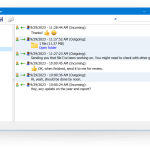192.168.1.1 is a critical IP address gateway to your router’s configuration settings. Accessing this web-based interface is essential for managing your home or small business network. In this guide, we’ll walk you through the step-by-step process of logging in to 192.168.1.1.
Before You Begin:
Before you can log in to 192.168.1.1, ensure the following:
Network Connection: Your computer or device must be connected to the same network as your router. This can be done via an Ethernet cable or a Wi-Fi connection.
Default Credentials: By default, most routers have common login credentials. The typical default username is “admin,” and the default password is also often “admin.” However, it’s strongly recommended to change these defaults for security reasons.
Steps to Log In to 192.168.1.1:
Open Your Web Browser: Launch your preferred web browser (e.g., Chrome, Firefox, Edge).
Enter the IP Address: In the address bar at the top of the browser window, type “http://192.168.1.1” or simply “192.168.1.1” and press “Enter.”
Note: You don’t need to include “http://” every time, but it won’t cause any harm to do so.
Access the Login Page: After hitting “Enter,” you’ll be directed to the router’s login page. Here, you’ll need to enter your login credentials. If you haven’t changed them from the defaults, try using “admin” for both the username and password.
Important: If you’ve changed the login credentials in the past and can’t recall them, you may need to perform a factory reset on your router to restore the default settings. Be aware that this will erase all your router’s configurations.
Log In: Once you’ve entered the correct username and password, click the “Log In” or “Submit” button on the login page.
Access Router Configuration: If the credentials are accurate, you’ll gain access to your router’s web-based configuration interface. Here, you can adjust various settings, including Wi-Fi configuration, security options, port forwarding, and device management.
Tips for Router Security:
Change Default Credentials: As mentioned earlier, changing your router’s default login username and password is crucial to enhance security.
Keep Firmware Updated: Regularly update your router’s firmware to protect against security vulnerabilities and ensure optimal performance.
Use Strong Passwords: Set strong, unique passwords for your router’s login and your Wi-Fi network.
Enable WPA3 Encryption: To enhance Wi-Fi security, consider using WPA3 encryption for your network.
Configure Guest Networks: Isolate guest devices from your primary network by setting up a guest network.
Logging in to 192.168.1.1 is a fundamental skill for managing your router and network settings. Whether you need to adjust your Wi-Fi settings, set up security features, or perform advanced configurations, access to the router’s web interface is the first step in achieving a secure and well-functioning network.
Read Also: Ensuring Safety: The Importance of Fire Alarm Installation



